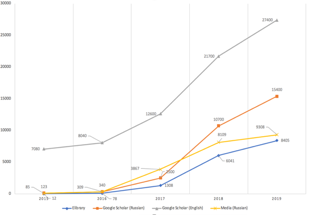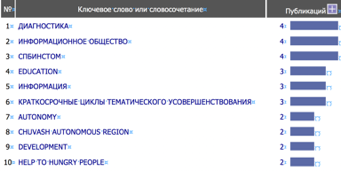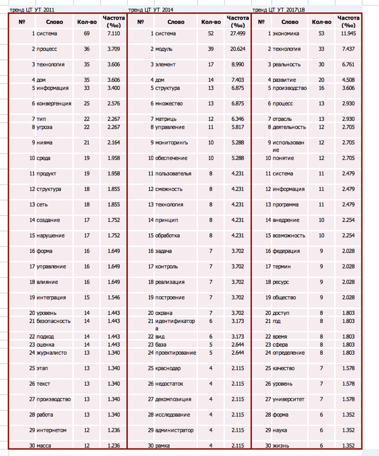Kononova O.V., Prokudin D.E.
The issues of applying trends are widely presented in domestic and foreign scientific works, practical commercial proposals and applications. Trends are an effective analytical tool and can be used for research and analytical work. It is important for the analyst to know the answers to the following questions:
What is a trend and what types of trends are there?
How, using what software tools, to build a trend?
How to interpret the results of trend building?
There are several generally accepted approaches to interpreting the concept of "trend".
A trend is a graphical representation of changes in a certain value or a group of values that reflect the phenomena or processes under consideration in dynamics over a time interval, often with forecast elements for subsequent time intervals. This trend presentation is always based on quantitative measurements.
A trend is a presentation of information about a situation or phenomena in a schematic, tabular or textual (descriptive) form, reflecting a "slice", "picture", state of affairs for a certain period of time or for a certain date. This presentation of the trend reflects the qualitative characteristics, content (semantics) of the phenomena under study. Qualitative characteristics are often the result of processing, analyzing and interpreting numerical data, for example, the frequency of occurrence of terms in the text.
, – - . - , , . - , , , , , , , .
- - , , . , , «», , « ».
: , , . , . , , Voyant-tools (https://voyant-tools.org), Tropes, (http://www.semantic-knowledge.com/tropes.htm), Sketch Engine (https://www.sketchengine.eu), T-Libra(http://www.softconst.ru/tlibra/) , , , (http://elibrary.ru), Scopus (https://www.scopus.com).
() . : , , ; , «» , .
.


, ( , , 2018, 2019, 2020) (2010-2015, 2016-2020) . . , , , . «» , Excel.

.

, , , ( ), – .
, , . , . , . – ( ) ( ). ( ). - ( ) ( ), .

, , - , ( ), . , .

, , , ( ).

– - () 3 4 ( ). - ( ) - ( ).

, , , , . , , , «» ( , ) , .
.
